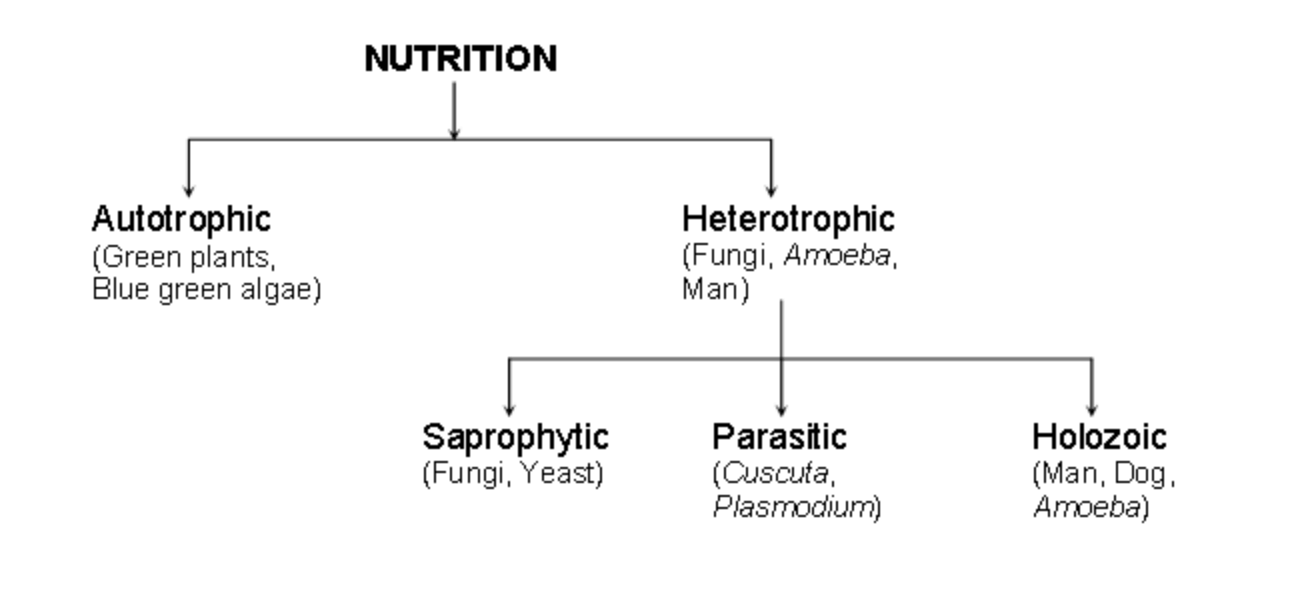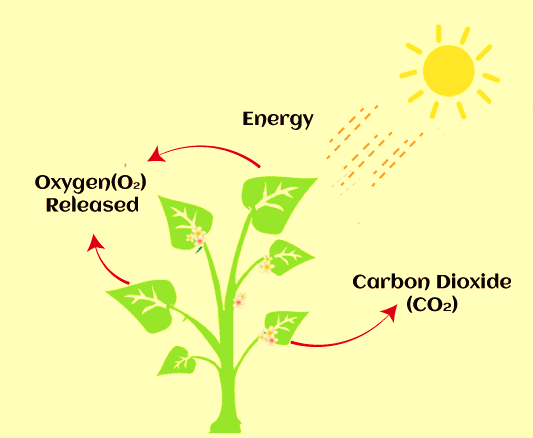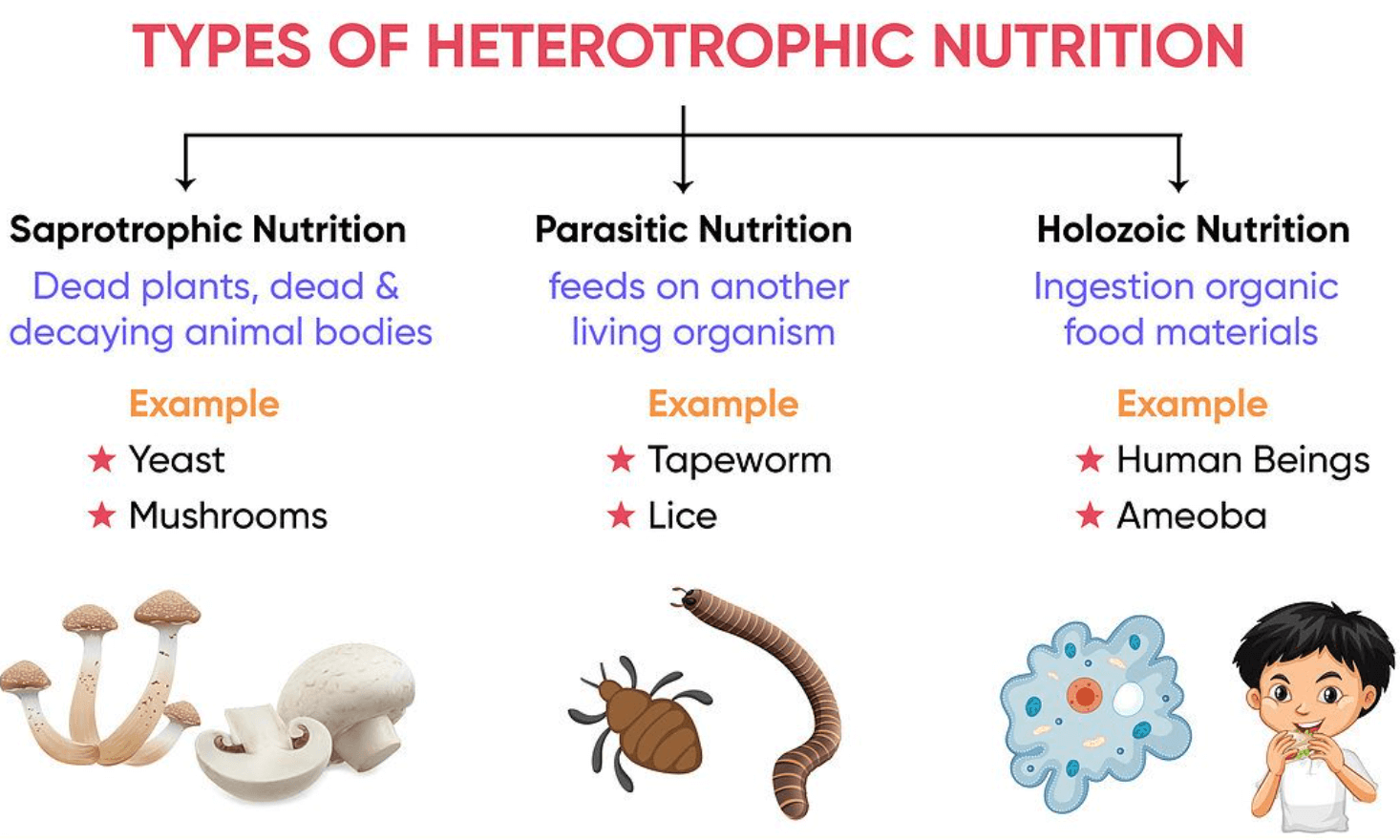Table of Contents
As we know Nutrition is one of the most important topics of chapter 01 “Life Processes” from class 10th Biology section. Food is an organic substance, the simplest food is glucose also known as simple sugar. A more complex food is starch, which is made up of glucose. Generally, glucose and starch are known as carbohydrates. Carbohydrates are the most common food for getting energy. The process in which we consume food or take food and utilize it is generally known as nutrition. It is the process in which food is obtained in order to utilize it to provide energy for performing various metabolic activities of the organisms.
What is Nutrition?
Nutrition refers to the process by which organisms obtain and utilize nutrients from the food they consume, enabling them to grow, function, and maintain their overall health. Nutrition plays a crucial role in providing the body with the essential elements it needs to function properly. A balanced diet that meets individual nutritional needs is key to promoting overall well-being and preventing various health issues.
Different Modes of Nutrition
There are mainly two types of nutrition or we can also say that there are two modes of nutrition. The modes of nutrition mean the method of producing food or obtaining food by an organism. As we know that every organism does not obtain food in the same way, different organisms have different methods of obtaining food. All the organisms are classified into two groups: Autotrophs and Heterotrophs; thus they acquire two different modes of nutrition which are: Autotrophic Nutrition and heterotrophic Nutrition.
| Different Modes of Nutrition | |
| Name | Description |
| Autotrophic Nutrition | It is self-sustaining, where organisms like plants use sunlight to convert carbon dioxide and water into energy-rich glucose. |
| Heterotrophic Nutrition | It occurs when an organism obtains nutrients by consuming other organisms or organic matter, breaking them down for energy and growth. Heterotrophic Nutrition is of 3 types namely Holozoic Nutrition, Saprophytic Nutrition, and Parasitic Nutrition. |

Autotrophic Nutrition
Autotrophic nutrition is a biological process by which certain organisms, primarily plants, algae, and some bacteria, are capable of producing their own organic nutrients from inorganic substances, typically through Photosynthesis. Autotrophic Nutrition is also a type of Nutrition in Plants.
This intricate process involves capturing light energy from the sun, using chlorophyll and other pigments, and converting it into chemical energy. This energy is then utilized to synthesize glucose and other essential organic molecules from carbon dioxide and water. Autotrophic organisms play a vital role in an ecosystem as they form the basis of the food chain, providing energy and nutrients for heterotrophic organisms that cannot produce their own food.

Functions of Autotrophic Nutrition
Autotrophic nutrition plays many important functions in the maintenance of an ecosystem. Some of them are mentioned below and these functions collectively highlight the vital roles that autotrophic nutrition and photosynthesis play in supporting life on earth.
- Carbon Sink: Autotrophs contribute to carbon sequestration, as they store carbon in their tissues, aiding in the regulation of carbon dioxide level in the atmosphere and they also help in the proper functioning of the carbon cycle.
- Nitrogen Fixation: Certain autotrophic bacteria play a role in nitrogen fixation, converting atmospheric nitrogen into a form usable by the plants, thus enriching soil fertility and maintaining proper regulation of the nitrogen cycle in the environment.
- Biomass Production: Autotrophs accumulate biomass, which becomes a source of energy for herbivores and subsequently higher trophic levels in the food chain.
- Energy Production: Autotrophic organisms convert light energy into chemical energy through photosynthesis, which is essential for their survival and growth.
- Ecosystem Stability: Autotrophs contribute to the stability of ecosystems by maintaining energy flow and nutrient cycling, which supports the overall health of the ecosystem.
Heterotrophic Nutrition
Heterotrophic nutrition is a mode of obtaining energy and nutrients from organisms that cannot produce their own food through photosynthesis or other self-sustaining processes. Instead, they rely on consuming organic matter produced by other organisms. This can involve the ingestion of other living organisms (Predation) or the absorption of dissolved organic material (Saprophytism).
Heterotrophs break down the ingested or absorbed materials into simpler substances, such as amino acids, sugars, and fatty acids, which can then be used for energy production and growth. Humans, and most animals, as well as many fungi and some bacteria, are examples of heterotrophic organisms that depend on external sources of nutrition for their survival. There are mainly three types of Heterotrophic Nutrition: Holozoic, saprophytic, and parasitic nutrition.
| Types of Heterotrophic Nutrition | |
| Types | Description |
| Holozoic Nutrition | It is a type of feeding in which organisms consume solid food and digest it internally. |
| Saprophytic Nutrition | In this type of nutrition, the organisms obtain their nutrients by feeding on dead or decaying organic matter. |
| Parasitic Nutrition | It is when an organism obtains nutrients by living on or in a host organism, often harming the host in the process. |

Holozoic Nutrition
In Holozoic nutrition, organisms ingest solid organic matter, usually other living organisms, and then digest it internally. The ingested material is broken down into simpler molecules through mechanical and chemical processes. This type of nutrition is commonly observed in animals, including humans, who consume a variety of foods and use specialized organs like the digestive system to process and absorb nutrients.
We can also say that holozoic nutrition is nutrition in which an organism takes complex organic food materials into its body by the process of ingestion, this ingested food is then digested and absorbed into the body cells of the amoeba.
Saprophytic Nutrition
Saprophytic organisms obtain their nutrients from dead and decaying organic matter. They secrete enzymes onto the external environment, breaking down complex organic substances into simpler molecules. These smaller molecules are absorbed through the cell membrane.
Fungi, some bacteria, and certain protists use saprophytic nutrition, where they feed on dead or decaying matter. This process is important for breaking down dead organisms and recycling nutrients in the environment, helping to keep ecosystems healthy and balanced. They play a key role in decomposition and nutrient flow.
Parasitic Nutrition
Parasitic nutrition is another type of heterotrophic nutrition where an organism, known as a parasite, obtains its nutrients from a living host organism. Parasites rely on their host’s resources, often causing harm or detriment to the host’s health in the process. Unlike predators, parasites typically do not kill their host immediately, as their survival depends on a continuous supply of nutrients.
Parasites can be found in various biological kingdoms, including animals, plants, and microorganisms. Examples of parasitic organisms include tapeworms, ticks, fleas, and certain types of bacteria and fungi. The relationship between parasites and their hosts can vary in complexity, ranging from mild inconvenience to severe disease and death for the host organisms.
Functions of Heterotrophic Nutrition
Heterotrophic nutrition is essential for the survival, growth, and functioning of numerous organisms, forming a critical component of the interconnected web of life in an ecosystem.
- Diverse Dietary Habits: Heterotrophic nutrition leads to a wide range of dietary habits among organisms, contributing to the biodiversity of an ecosystem.
- Ecological Interactions: Heterotrophic organisms play crucial roles in food chains and ecosystems, serving as prey for predators and contributing to the balance of population in an ecosystem.
- Decomposition and Nutrients Cycling: Heterotrophic organisms involved in saprophytic nutrition aid in breaking down dead organic matter, returning nutrients to the soil and ecosystem for reuse by other organisms.
- Energy Acquisition: Heterotrophic nutrition allows organisms to obtain the energy they need for various life processes, such as movement, growth, and reproduction.
- Metabolic support: The acquired nutrients are used in metabolic processes like respiration, where they are broken down to release energy that powers cellular activities.

 Human Heart Structure, Function, Diagram...
Human Heart Structure, Function, Diagram...
 Difference Between Flora and Fauna
Difference Between Flora and Fauna
 Neuron Definition, Function, Parts and D...
Neuron Definition, Function, Parts and D...













